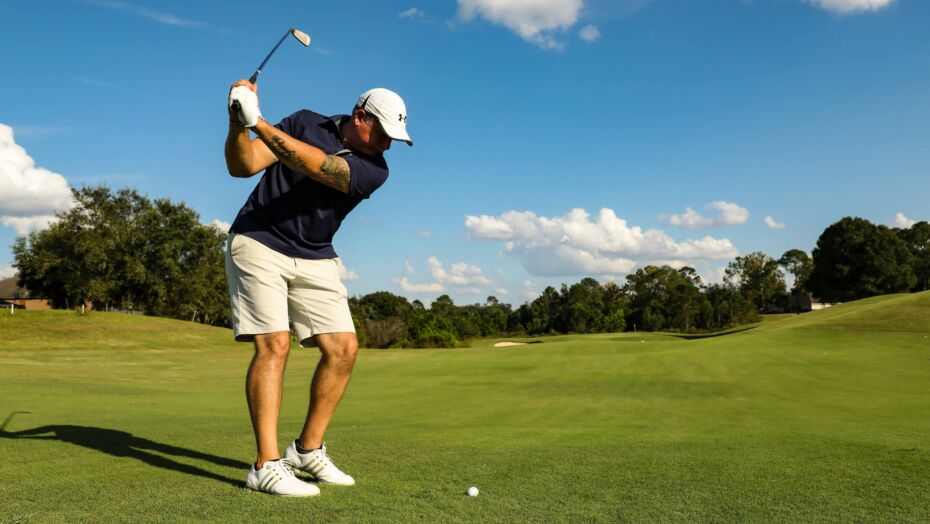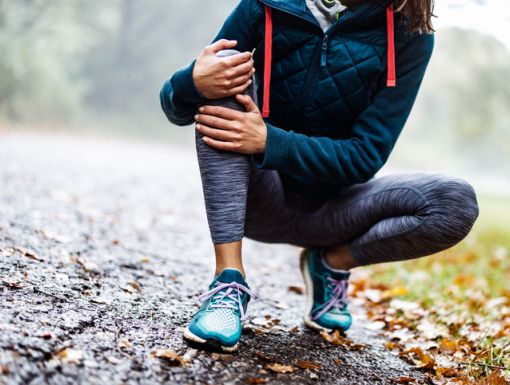
3 Common Golf Injuries and How to Prevent Them
Whether you’re competing at the highest level or enjoying a Saturday morning round with your friends, golf demands more than you may realize. Though the sport is known to be low impact, the repetitive motion and precision required can lead to a variety of injuries, especially when warm-up routines and techniques are overlooked.
Understanding common golf injuries, their causes, and how to prevent them is key to staying healthy and playing your best rounds.
What are the most common injuries in golf?
Golf is one of the most challenging yet rewarding sports. Anyone of any age can play the sport, making it fun for multi-generational groups. However, the strains put on the body at any age can be taxing.
- Pain in the lower back: One of the most common injuries that golfers of any age struggle with is lower back pain. This often stems from the repetitive nature of the golf swing, poor swing mechanics, and weak core and pelvic stability. Lower back pain in golfers consists of a dull or sharp pain on either side of the back and can also spread to the hips or legs. Warning signs include stiffness, limited mobility, and pain that intensifies after a swing.
- Golfer’s elbow: Another common injury many golfers face is golfer’s elbow. This consists of pain located at the inside of the elbow area, as opposed to tennis elbow, which is on the outside. This can happen from overuse and repetitive strain on surrounding wrist flexor muscles. Stiffness and weakness in the elbow can occur, making it difficult to grip or swing the club. The pain can come and go and can worsen with certain movements of the elbow or wrist.
- Shoulder pain: Shoulder pain can bother many golfers, especially those that play consistently. Because of certain movements in the swing, some of the external structures of the shoulder, including the rotator cuff and bursa, can become injured or irritated, a condition known as shoulder impingement. Some golfers may also appreciate a clicking or grinding feeling that can affect their swing and cause them pain. Even off the course, swelling or pain at night while lying on your shoulder can arise.
What causes golf injuries?
- Poor swing mechanics: A poor swing can create golf injuries and can place stress on certain joints and muscles, especially in the lower back, shoulder and elbows. Continuous strain or “pushing through discomfort” can worsen injuries. Having poor techniques or swing mechanics can also put strain on muscles that shouldn’t be heavily involved in the swing, leading to muscle imbalance, poor neuromuscular firing, and muscle fatigue. Inefficient swing mechanics not only increase the risk of injury but also reduce performance by throwing off power and control.
- Lack of rotation: Good swing mechanics rely heavily on rotating well in the hips, shoulders, and torso. By rotating too much or not enough, you can put yourself at risk for wrist, back, and shoulder strain. If the body rotation is not the correct amount, golfers can rely too heavily on the arms or wrist to hit the ball. The “over the top” casting of the club can also occur, leading to large misses left and right.
- No warm-up: Skipping stretches before a round can increase golf injuries severely. The muscles and joints in the body are not prepared for sudden and repetitive movements, especially during morning rounds when your body is still “waking up.’’ If your muscles aren’t warm and stretched out, it can put a lot of excess strain on your body. Even if you don’t have time to hit balls on the range before your round, a good five- to 10-minute stretch before you tee off can help your body adjust to the repetitiveness of the swing much easier.
- Poor posture and setup: Having a slouched or arched spine, locked knees, or any other aspects of poor posture in golf can make it more difficult to swing with ease. Poor posture can put increased and undue stress on your spine, limiting your ability to make a rotate. This can also cause other parts of your body, like your arms or hips, to overcompensate for the poor posture and lead to undesired slices or draws.
How are golf injuries treated?
If you start to feel pain in a certain area of your body after you are done playing golf, one of the best ways to help decrease worsening of symptoms is to change your activity, which may require several days of rest away from golf.
Throughout this time, putting ice or heat on the area can relieve pain. Ice can help to reduce pain or inflammation and is most effective after activity. Heat is better to use before or after activity to loosen up tight muscles. Over-the-counter anti-inflammatory medications like ibuprofen can help manage pain and decrease inflammation.
Physical therapy and stretching work well to improve flexibility and strengthen weaker muscles. Many physical therapists can help with other forms of treatment, too, as they have many treatments at their disposal that can be individualized to specific issues.
In the case of back, shoulder or elbow pain, where there is muscle tightness or restriction in motion, osteopathic manipulation is known to be a safe and effective treatment consideration that can be used with physical therapy or a home exercise program.
If pain persists after you’ve tried different home remedy treatments, make an appointment with a doctor who treats sports injuries. Early diagnosis and intervention can stop injuries from becoming chronic conditions that keep you away from activities that you enjoy.
How do you prevent golf injuries?
Stretching before a round can warm up muscles and relieve pressure and strain on the body. This improves your flexibility and allows your body to move more freely during the golf swing. Using proper technique is key. Make sure your posture, setup and grip are all done the right way, so no additional stress is put on your body.
Listening to your body is important. If do you experience pain, don’t ignore it or change your mechanics to help decrease pain as this can cause problems elsewhere. Allow for rest and recovery between rounds to avoid overuse injuries.
Summary
Golf combines precision, power and repetition, making it both rewarding and physically demanding. By understanding common golf injuries, what causes them, and the best ways to strengthen your body, golfers of all ages can stay healthy and enjoy the game with confidence.



